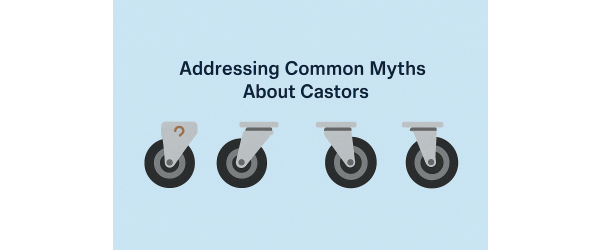When it comes to transporting heavy loads with a sack truck, ensuring the wheels can handle the weight is paramount. The load capacity of sack truck wheels determines their ability to support various weights without compromising safety or performance. In this comprehensive guide, we'll demystify load capacity and provide insights into matching sack truck wheels to weight requirements, helping you make informed decisions for your hauling needs.
Understanding Load Capacity
Load capacity refers to the maximum weight a sack truck wheel can support without experiencing failure or deformation. It's crucial to select wheels with a load capacity that exceeds the weight of the heaviest loads you anticipate transporting. Failure to do so can result in wheel damage, accidents, and potential injuries.
Factors Affecting Load Capacity
Several factors influence the load capacity of sack truck wheels:
- Wheel Material: Wheels made from different materials, such as rubber, polyurethane, or pneumatic, have varying load capacities. Choose a wheel material that can withstand the intended load without compromising performance.
- Wheel Size: Larger wheels generally have higher load capacities than smaller ones due to increased surface area and weight distribution. Consider the size of your loads when selecting wheel diameter and width.
- Wheel Construction: The design and construction of the wheel, including its hub, bearings, and tread pattern, play a significant role in determining load capacity. Opt for wheels with robust construction and high-quality components for optimal performance under heavy loads.
Matching Wheels to Weight Requirements
- Determine Maximum Load: Assess the heaviest loads you anticipate transporting using the sack truck. Consider both the weight of the items and any additional factors, such as stacking height or uneven weight distribution.
- Consult Load Capacity Ratings: Refer to the load capacity ratings provided by the manufacturer for each type of sack truck wheel. Ensure that the chosen wheels have a load capacity that exceeds the maximum anticipated load to maintain safety margins.
- Consider Safety Factors: It's advisable to err on the side of caution and choose wheels with a higher load capacity than strictly necessary. This provides an additional safety buffer and helps prevent wheel damage or failure under unexpected circumstances.
Conclusion
Matching sack truck wheels to weight requirements is essential for safe and efficient material handling operations. By understanding load capacity and considering factors such as wheel material, size, and construction, you can select wheels that meet your hauling needs while ensuring safety and reliability. For a wide selection of high-quality sack truck wheels and accessories, visit Castors-Online.co.uk and equip your sack truck for heavy-duty tasks with confidence.










